Pricing Guides & Dictionary of Makers Marks for Antiques & Collectibles

ANTIQUE BAROMETERS - Types & Periods and Appraisal Values
Join the most updated and complete collectibles research online - Learn more...
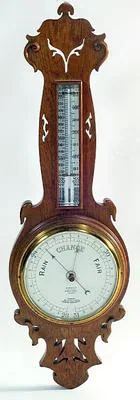 As most science buffs already know, a Barometer is basically a scientific instrument that measures Atmospheric Pressure and, along with other measurements and indicators, can be used to determine current and upcoming weather patterns. In the context of this website, we will concentrate on Antique Barometers, which are valued collectibles and often have some decorative appeal.
As most science buffs already know, a Barometer is basically a scientific instrument that measures Atmospheric Pressure and, along with other measurements and indicators, can be used to determine current and upcoming weather patterns. In the context of this website, we will concentrate on Antique Barometers, which are valued collectibles and often have some decorative appeal.
Although there are various types of barometers, the two that are most desirable and fetch the highest prices at auction are the Stick Barometer, also known as "Mural Barometers" and which are thin wall-hung wood-encased, and the Wheel Barometer that features a circular dial near the bottom ["banjo" type]. Both versions were prevalent around the Georgian period in the UK & elsewhere and played a prominent role as a decorative element in rich homes. Some barometers were also combined with Clock Works of various types and were encased into a large upstanding piece of furniture posed as a grand adornment to a room. The wood casing was mostly Walnut, Mahogany, Oak, or other fruit woods and many had engraved or inlaid decorative details. Ormolu and ornamental sculptural features were also quite customary.
Because of their age, most antique barometers nowadays have been restored in some way or another - usually as lightly as cleaning/buffing its outer surface or replacing some minor parts, all the way to major cannibalization of using so many parts from other instruments to basically re-create another. Although some level of restoration is acceptable, the less "original" the entire barometer is rendered, the less its value. Replacement parts also need to be authentic and not just rebuilt.
Many also bear the maker's tag or label, which is important to determine the correct age and workmanship. Barometers in today's antique market are sometimes misrepresented as from one era or another, especially ones that do not bear the manufacturer's mark. Authentic Georgian period barometers are by far the most valuable, but some dealers cannot distinguish them from later Edwardian or Victorian ones. In general, older barometers tend to be made of expensive wood and seem more sturdy. Decorative details seem more elegant and refined. In contrast and partly because of their proliferation in English homes by the mid-19thC, Victorian barometers appear somewhat mass-produced with less attention to detail. Still pretty and imposing regardless of their age, antique barometers abide by the same rules as any other collectible: the more authentic - old - original - embellished - well crafted it is, the more expensive it is.
Unlock the true value of your collection with our comprehensive research guides from identifying makers' marks to appraising all kinds of antiques and collectibles, including items featured in this article.
Our up-to-date information will give you an accurate understanding of your items' worth. Don't miss out on this valuable resource - visit our research tools today!
In addition to some examples shown below on this page, you can also search our price guide for your own treasures.
Examples of related items from our Price Guides
-
 COMPASS & BAROMETER LOTLot of compasses
[more like this]
COMPASS & BAROMETER LOTLot of compasses
[more like this]
-
 Simmons Stick Barometer New York. A Simm
[more like this]
Simmons Stick Barometer New York. A Simm
[more like this]
-
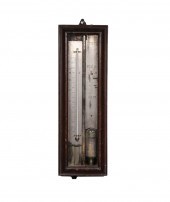 RARE CURRIER & SIMPSON 1860 'UNION' BARO
[more like this]
RARE CURRIER & SIMPSON 1860 'UNION' BARO
[more like this]
-
 Brass Ships Wheel Clock/Barometer Desk S
[more like this]
Brass Ships Wheel Clock/Barometer Desk S
[more like this]
-
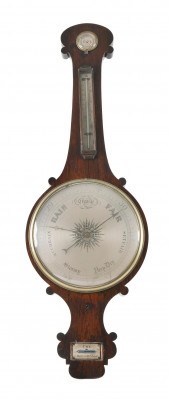 EDWARDIAN WALL-MOUNTED BANJO BAROMETER L
[more like this]
EDWARDIAN WALL-MOUNTED BANJO BAROMETER L
[more like this]
-
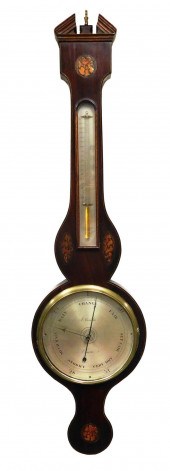 ENGLISH REGENCY INLAID MAHOGANY MERCURY
[more like this]
ENGLISH REGENCY INLAID MAHOGANY MERCURY
[more like this]
-
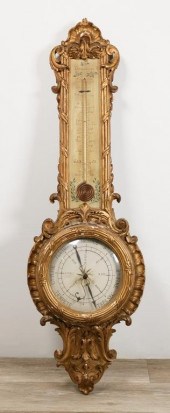 CARVED GILTWOOD FRENCH BAROMETERCarved g
[more like this]
CARVED GILTWOOD FRENCH BAROMETERCarved g
[more like this]
-
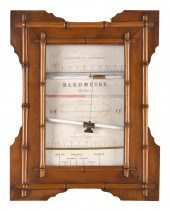 19TH CENTURY FRENCH SYMPIESOMETER CIRCA
[more like this]
19TH CENTURY FRENCH SYMPIESOMETER CIRCA
[more like this]
-
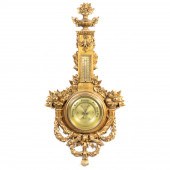 ITALIAN GILTWOOD NEOCLASSICAL-STYLE WALL
[more like this]
ITALIAN GILTWOOD NEOCLASSICAL-STYLE WALL
[more like this]
-
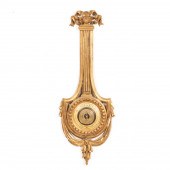 ITALIAN NEOCLASSICAL STYLE GILTWOOD WALL
[more like this]
ITALIAN NEOCLASSICAL STYLE GILTWOOD WALL
[more like this]
-
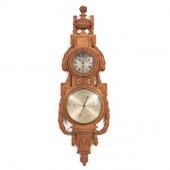 L. 19TH C NEOCLASSICAL STYLE CARVED BARO
[more like this]
L. 19TH C NEOCLASSICAL STYLE CARVED BARO
[more like this]
-
 BLACK FOREST STYLE CLOCK W/ BAROMETER &
[more like this]
BLACK FOREST STYLE CLOCK W/ BAROMETER &
[more like this]
There are many more auction results available to our members...





